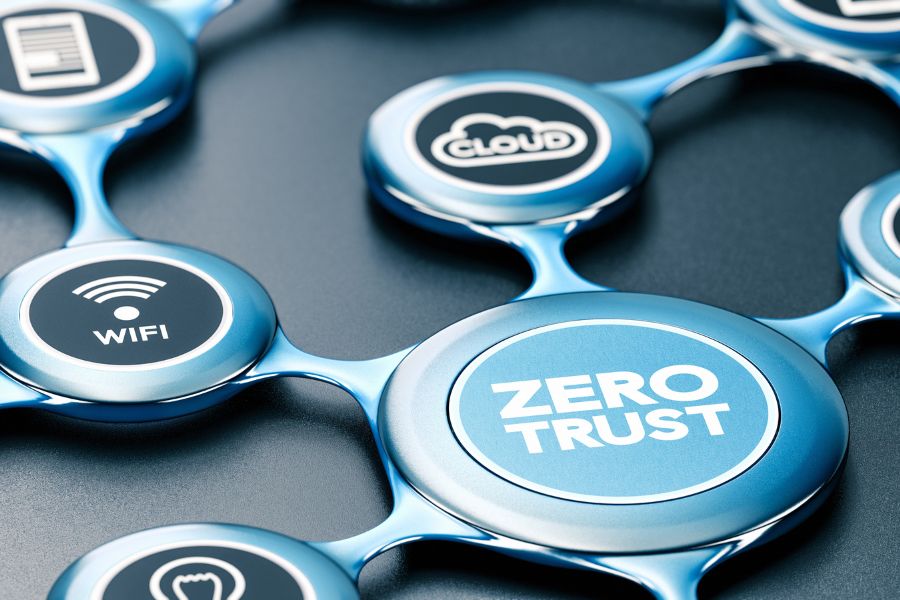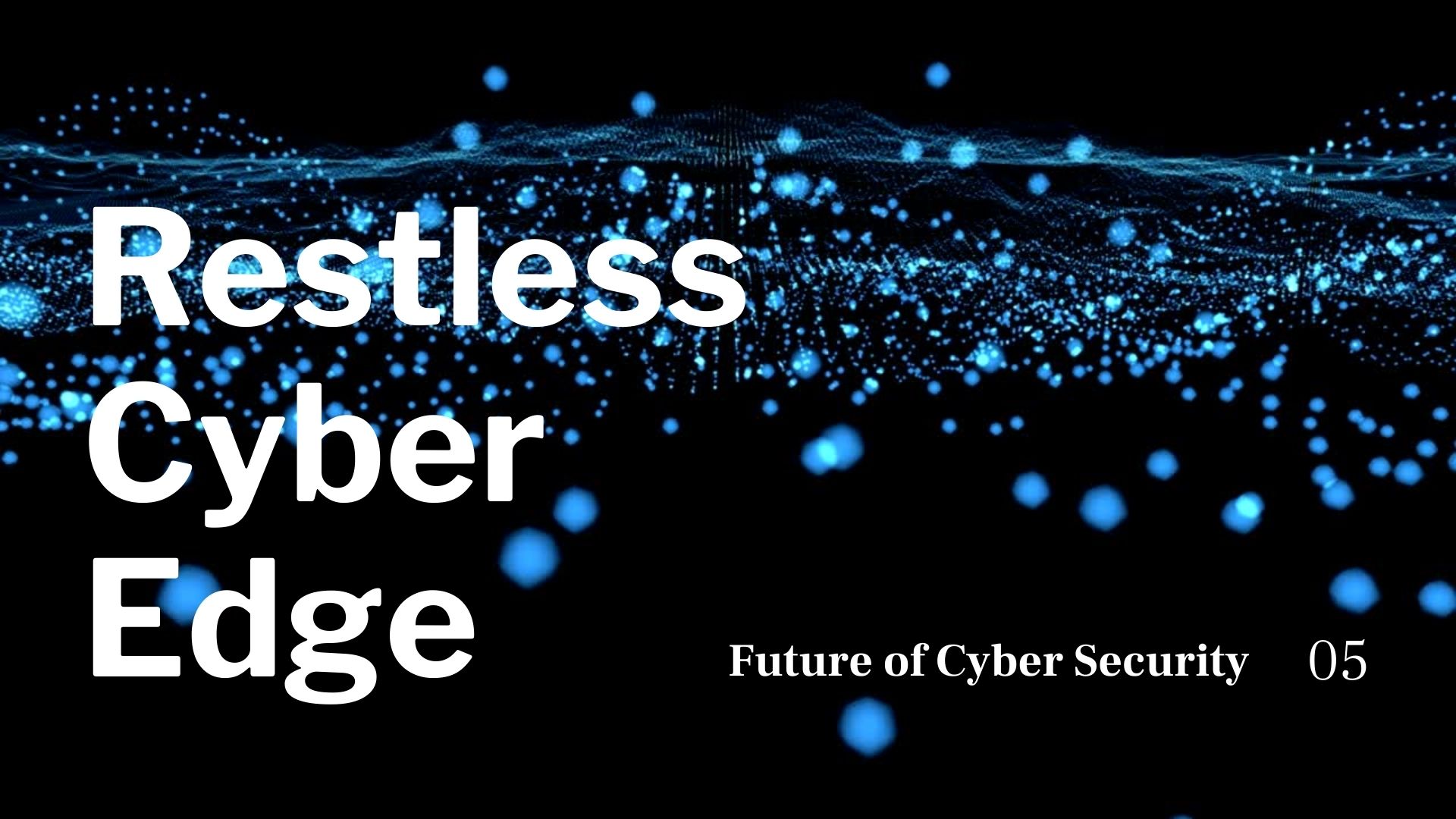What is Zero Trust Security? Principles, Framework, and Policy
July 2, 2023, 7 min read
The IT sector has historically employed perimeter security strategies to guard its most prized assets, such as user data and intellectual property. As part of these precautions, firewalls and other network-based tools were used to monitor and verify users’ identities connecting to and disconnecting from the system. But the shift to hybrid cloud infrastructure and digital transformation alters business practices across sectors. To rely solely on a network boundary is no longer adequate.
Zero trust security architecture, conceived by John Kindervag, principal analyst at Forrester Research, in 2010, is an all-encompassing framework that ensures the safety of a company’s most prized possessions. To function, it treats every link and node as potentially dangerous. Existing connections within the framework are safe from external and internal dangers.
What is Zero Trust?
Zero trust security definition involves this: “zero trust security” refers to a security framework that mandates the authentication, authorization, and continuous validation of security configuration and posture of all users before granting or maintaining access to applications and data, regardless of whether they are inside or outside the organization’s network. Networks in the Zero Trust model may be on-premises, in the cloud, or a hybrid of the two, and they may employ remote workers and use resources from anywhere in the world.
To ensure the safety of critical infrastructure and data during the current digital transformation era, the concept of “zero trust” has emerged as a framework. It is tailor-made to meet the needs of modern businesses and the threats they face, such as protecting remote employees and data in hybrid cloud environments and ransomware. Many standards from established organizations can assist you in aligning Zero Trust with your organization, even though many vendors have attempted to create their definitions of Zero Trust.
When and Why Zero Trust is Effective?
When put into action, this framework combines cutting-edge technologies like risk-based multi-factor authentication, identity protection, next-generation endpoint security, and robust cloud workload technology to ensure the authenticity of a user or system, take into account the context of their access, and keep the system secure. Additionally, when implementing Zero Trust, data encryption, email security, and asset and endpoint hygiene verification before application connectivity must all be considered.
Zero Trust is a radical departure from the “trust but verifies” model of network security that has previously been in use. The old method unthinkingly trusted users and endpoints inside the network perimeter, leaving the company vulnerable to attacks from inside and outside the company, as compromised credentials would grant the attackers full access to the network. Due to the 2020 pandemic, the trend toward a more dispersed workplace and the cloud migration of business transformation initiatives rendered this model obsolete.
Since organizations using zero-trust architecture must ensure that users and their devices always have the appropriate permissions and credentials, constant monitoring and validation are essential. Policy enforcement that considers user and device risk, compliance, or other requirements, must be in place before a transaction can proceed. To do this, the company must have a complete inventory of all services and privileged accounts and the ability to set controls over the resources to which they have access. A static verification process is useless because vulnerabilities and user characteristics are constantly evolving.
Before granting access to any of your enterprise or cloud assets, you must ensure that all requests for such access have been thoroughly vetted.
The Principles of Zero Trust Security
To effectively enforce Zero Trust security principles, it is necessary to have real-time visibility into a large number of user and application identity attributes, such as:
- User identification and credential type (human, programmatic)
- Access permissions based on credentials for each gadget
- Standard certificates and gadget pairing (behavior patterns)
- Characteristics of the terminal hardware and their applications
- Geographical position
- Firmware Upgrades
- Risk and authentication procedures
- The Number of Currently Installed Updates for Your Operating System
- Embedded software on the end device
- Threat and incident detection, including the identification of malicious behavior and attempted attacks
To improve the training of algorithmic AI/ML models for hyper-accurate policy response, analytics must be linked to trillions of events, broad enterprise telemetry, and threat intelligence. To prevent breaches and reduce their effects, businesses should thoroughly analyze their IT infrastructure and the vectors for an attack. Device types, identities, and group purposes are all valid criteria for this division. Untrusted protocols to the domain controller, like Remote Desktop Protocol (RDP) or Remote Procedure Call (RPC), should always be challenged or limited to specific credentials.
An overwhelming majority (over 80%) of network attacks involve some credential misuse or abuse. Email security and secure web gateway (CASB) providers also offer protections for credentials and data in light of the persistently novel attacks against credentials and identity stores. This aids in keeping passwords safe and accounts intact, following policies, and avoiding potentially dangerous shadow IT services.
Model and Framework for Security with Zero Trust in the External Environment
Considering how the digital frontier is affecting the security architecture of modern business networks, zero trust has become necessary. The protections offered by a zero-trust security model are comprehensive and should not be underestimated. Enterprises can keep their policies under control and make the required adjustments by using finer-grained control over access, enhanced visibility, and improved analytics and automation.
A zero trust model comprises seven parts: data, networks, people, workloads, devices, visibility, analytics, and automation and orchestration. Let’s dissect each one and figure out what it means.
Framework for Zero Trust Security
In the zero trust model and zero trust security framework, data protection comes first, followed by additional layers of security. Less sensitive information would be accessible in case of a network intrusion, whether using a hacker or a malicious insider. In addition, protocols will be in place to react quickly to the attack so that it does not develop into a full-fledged security hole.
Because of its importance in preventing external and internal attacks, data is one of the cornerstones of the zero-trust model. When businesses know who has access to their data, if that data is sensitive or outdated, and if they have a plan to deal with attacks, they can better safeguard that data.
To steal data from a zero-trust network, an attacker would need to be able to move freely throughout the system. This is made more difficult by the zero trust model’s use of advanced next-generation firewalls to isolate and classify the network.
No faith in humanity: The security strategy’s weakest link is the humans involved. Therefore, in zero trust, all local and remote users are tracked to see what resources they use and how often. The users are tracked so they don’t fall victim to phishing, weak passwords, or malicious insiders.
Collaborative work with no trust
Multiple software modules and applications help businesses interact with their clientele. Any software, API, or application that interacts with customers and hasn’t been patched is vulnerable to attack. Everything is a potential security risk in a zero-trust environment, including data storage, the operating system, and the website’s user interface. To further strengthen defenses against these vectors, it employs zero-trust-compliant controls. Zero-trust devices: The number of connected gadgets has increased dramatically over the past few years, thanks to the rise in popularity of the Internet of Things (IoT) and the increasing demand for smart technology worldwide. In this context, every single device is a potential backdoor for hackers to access the rest of your network. Security teams are better positioned to manage and control all devices on the web if they take a zero-trust security approach.
Analytics and monitoring
Companies can keep tabs on all network activity with the help of zero-trust principles. Analysis of user behavior and other real-time monitoring techniques can help spot suspicious activity as it occurs.
Orchestration and automation
Automation that aids in disaster recovery and maintains system availability is made possible by zero trust security. Faster fixes and more precise threat detection are both made possible through automation in a zero-trust model. Since incident response can be automated with the help of tools, personnel savings can be realized to be put to better use elsewhere.
Structure of the building
According to NIST, a zero-trust architecture must have well-defined logical parts to be implemented successfully. This infrastructure manages user resource access and keeps tabs on incoming and outgoing data traffic.
The National Institute of Standards and Technology (NIST) published “NIST Special Publication 800-207: Zero Trust Architecture” in August 2020; it describes the commonalities between zero-trust architectures, design scenarios, and potential dangers. The publication also outlines zero trust principles businesses can follow to quickly and easily implement zero trust security.
Recommended Procedures for Implementing Zero Trust Policy
How does one go about enforcing a zero-trust security policy? A lot. It necessitates the adoption of numerous zero-trust security best procedures, which are merely practical given the state of the cybersecurity threat landscape today.
A company that has adopted zero trust security services, for instance, will need to implement measures such as:
- Implement several steps to verify a user’s identity simultaneously (MFA).
- All hardware and software can remain up-to-date and fully functional if regular patch management and updates are performed.
- In-depth monitoring and analysis to glean the most relevant data for informing access control decisions.
- She is controlling who has access to what rather than the entire network.
- The rules define principal account and application access privileges.
Embracing Zero Trust Security is not only a smart strategy but an imperative in today’s rapidly changing threat landscape.
Zero Trust Security is not just a buzzword but a revolutionary approach to cybersecurity. By shifting away from traditional perimeter-based security models, Zero Trust Security focuses on verifying and validating every user, device, and transaction, regardless of location or network environment. It operates on the principle of “never trust, always verify,” ensuring that access privileges are granted only on a “need-to-know” basis. With a comprehensive framework and well-defined policies, organizations can implement Zero Trust Security to minimize the risk of data breaches, protect sensitive information, and safeguard their digital assets. By adopting this approach, businesses can achieve greater resilience and maintain a proactive stance against evolving cyber threats.




























